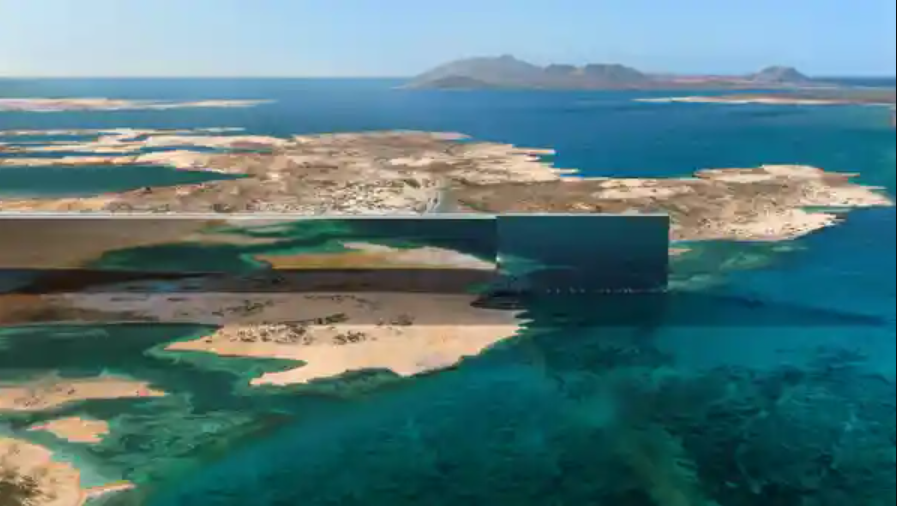The Line – due to be just 200 metres wide – will make Neom world’s most liveable city ‘by far’, officials claim
The promotional material is striking: two mirror-encased skyscrapers stretching more than 100 miles across a swathe of desert and mountain terrain, providing a future home for 9 million people. Is it the ultimate in high-density living, or a grandiose science fiction fantasy?
In short, economists, architects and analysts are not quite sure. So extravagant is Saudi Arabia’s plan to create an urban utopia that even those working on the project, known as the Line, do not yet know if its scale and scope can ever be realised.

Sceptics and supporters alike were this week given more insight into the extraordinary ambition of the development – the centrepiece of the futuristic Neom site near the Gulf of Aqaba – when the kingdom’s crown prince, Mohammed bin Salman, outlined central aspects of what he intends to be one of the most ambitious urban developments built in modern times.
First announced in 2017, Neom has consistently raised eyebrows due to proposed flourishes such as flying taxis and robot maids, even as architects and economists have questioned its feasibility.

According to the Saudis, artificial intelligence will be central to how people live in the 500-metre-high, 200-metre-wide structure, a car-free, carbon neutral bubble that will boast near total sustainability and a temperate, regulated microclimate. Past environmental pledges by the kingdom, such as a vow to achieve net zero carbon emissions by 2060, have prompted scepticism from environmentalists.
Multimedia presentations have added colour to what until now had been a concept that even some of the project’s planners had found difficult to visualise. The slickly produced films show a megacity that partly resembles the Death Star with hanging gardens. Residents will have “all daily needs” reachable within a five-minute walk, while also having access to other perks such as outdoor skiing facilities and “high-speed rail with an end-to-end transit of 20 minutes”, according to a statement.

Though Neom will operate under its own founding law, which is still being prepared, Saudi officials say they have no plans to waive the kingdom’s alcohol ban.
Prince Mohammed’s vision for modern living is central to his plans to transform the kingdom from an oil-dependent economy and conservative society that he believes is ill served to drive the country forward.
Neom was partly conceived as a divergence from tradition and from the sclerosis of the past four decades, in which leaders doubled down on a hardline interpretation of Islam, maintaining inflexible societal standards.

The kingdom’s de facto ruler on Monday laid claim to the Line being the world’s “most liveable city by far”. He said the model he envisaged was a replacement for unchecked urban development and waste that had diminished living standards for residents of cities.
The “first phase” of the project, lasting until 2030, would cost 1.2tn Saudi riyals (about £265bn), Prince Mohammed said. Besides government subsidies, potential sources of funding included the private sector and an initial public offering for Neom expected in 2024, he said.Saudi Arabia releases short teaser trailer for futuristic skyscraper complex the Line – video
In private, he has told aides and planners he wants Saudi Arabia to have its own version of the pyramids and is known to want the kingdom to be as renowned globally as other regional countries. However, the extravagance of the project and its various manifestations over the past five years have led some analysts to wonder whether it can ever get off the ground.
“With little access to the site, and only eight years left before residents are meant to move in, it’s a lot to take on trust,” said one consultant who works closely with the Saudi government. “And then there’s the inertia in the system. It’s hard to excise that.”

Robert Mogielnicki of the Arab Gulf States Institute in Washington told Agence France-Presse: “The concept has morphed so much from its early conception that it’s sometimes hard to determine its direction: scaling down, scaling up, or making an aggressive turn sideways.”
Prince Mohammed is hoping for a nationwide population boom that he says will be necessary to make Saudi Arabia, the world’s biggest crude exporter, an economic powerhouse. “That’s the main purpose of building Neom,” he said. “To raise the capacity of Saudi Arabia, get more citizens and more people in Saudi Arabia. And since we are doing it from nothing, why should we copy normal cities?”

Facing a population boom and a large percentage of young people looking for employment, he said Neom could generate up to 380,000 jobs. Saudi projections are for the kingdom to have a population of as many as 50 million by 2030, more than half of them foreigners. Saudi Arabia’s current population is just under 35 million.
Article Credits: The Guardian
